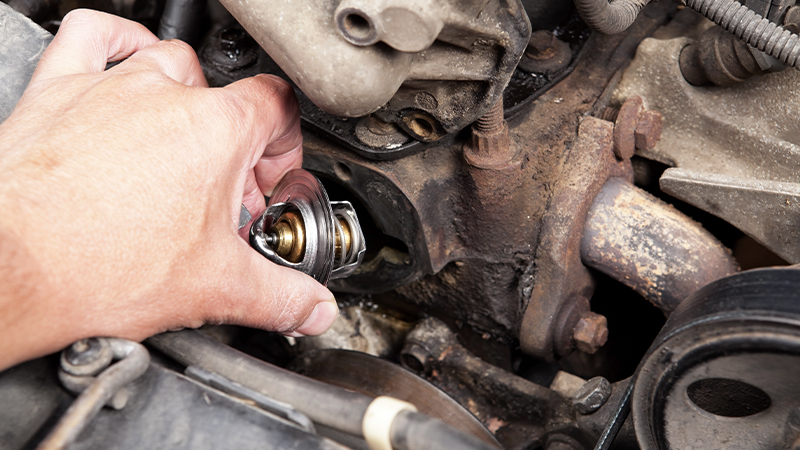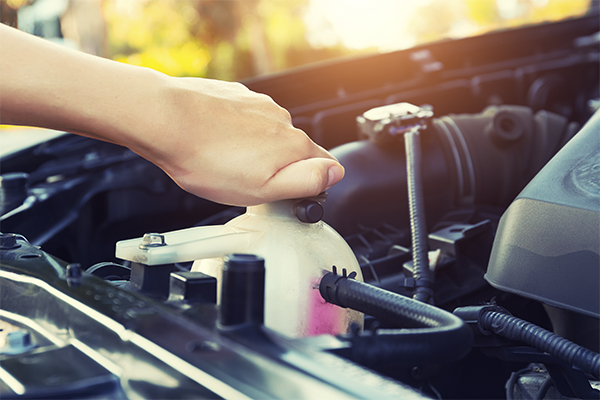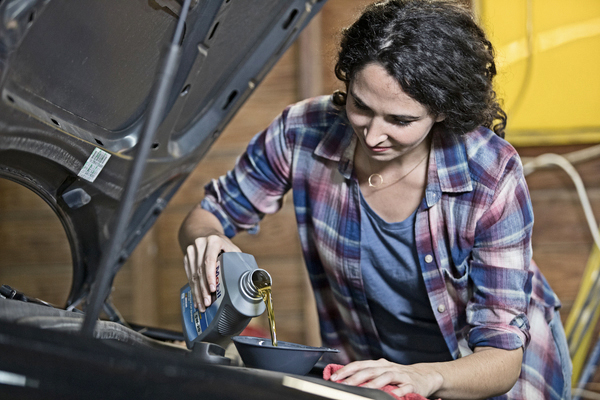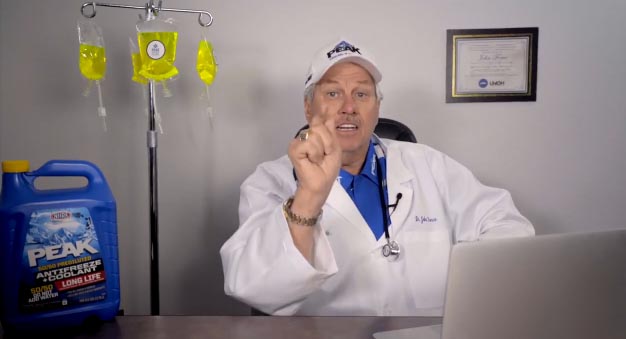Given its small size – one would fit in the palm of your hand – the thermostat plays an oversized role as a crucial component of a vehicle's cooling system. Sitting between the engine and the radiator and usually connected to the upper or lower radiator hose, think of the thermostat as a valve that opens and closes to allow or prevent coolant from flowing to the radiator. Preventing coolant flow may seem like it goes against the whole premise of how the cooling system works, but there's a good reason for doing so.
When the engine is first started, it's cold. A closed thermostat prevents the coolant from moving to the radiator where it can be cooled, and instead helps the engine heat up quickly and reach its optimal operating temperature, reducing engine wear and delivering heat to the passenger compartment faster.
All thermostats have a temperature rating at which they open or close, and the rating can differ from vehicle to vehicle based on the manufacturer's specifications. Most thermostats are rated to begin opening between 180 and 195 degrees and will reach the full open position around 20 degrees higher, allowing coolant to flow between the radiator and engine.
We also recommend:
How a Vehicle Cooling System Works
Your Coolant Questions Answered
The mechanics behind a thermostat
How does a thermostat sense the temperature and know when to open and close? It's not magic. Instead, the thermostat has a wax-filled cylinder on its side. As the engine temperature rises, the wax expands and steadily pushes on a rod that opens the thermostat, allowing coolant to flow. When the engine temperature drops, the wax begins to harden, and the thermostat starts to close. This process is continuous, with the thermostat adjusting how far it's open or closed while the engine is running.
Problems a thermostat can experience
The thermostat isn't a maintenance or wear-related item that requires replacement at any pre-set level. Instead, it's usually only replaced if failing, or whenever the water pump is replaced. The main problems a thermostat can experience are being stuck open, stuck closed, or leaking.
1. Thermostat stuck open
If the thermostat is stuck open, an optimal engine temperature is never going to be reached, and there will be no or little heat available in the passenger compartment, and engine wear can increase.
2. Thermostat stuck closed
If it's stuck closed, the engine is going to overheat because coolant isn't moving to the radiator. Debris or a broken spring in the thermostat could be responsible for it being stuck in either the open or closed position.
3. Leaking
Finally, the thermostat housing can fail and begin leaking coolant.
Signs of a bad thermostat
While steam-pouring-from-under-the-hood overheating is a clear signal that there's a problem with the thermostat or another cooling system component, there are also other, more subtle indicators that a thermostat is going bad, including those listed below. At the very least, a periodic visual inspection should be conducted under the hood and under the car to look for signs of leaking coolant. Another alternative is to actually test the thermostat by removing it from the vehicle and placing it in a pot of boiling water. If the thermostat opens in the water, and then closes when removed from the water, it's working. Other warning signs indicating a faulty thermostat include:
- Fluctuations in engine temperature (This could also indicate there's an air bubble in the system that can be removed by bleeding the cooling system.)
- “Check engine light" is illuminated with an OBD code indicating it's thermostat-related. There are multiple codes that could indicate a thermostat problem, such as P0128 or P0125.
- Engine overheating
- No heat or little heat in the passenger compartment
- Engine runs rough or there are fluctuations in engine performance
Thermostats are inexpensive – around $10 to $15 when it's a standalone thermostat, but the price will be higher for thermostats that are incorporated into the water outlet housing assembly found on many newer vehicles. Either way, replacing a thermostat that's exhibiting some warning signs, or whenever the water pump is replaced, is a smart investment of both time and money. When you're ready to replace your thermostat, check out our helpful guide before you get started.
Have you noticed a thermostat issue? Let us know in the comments.











